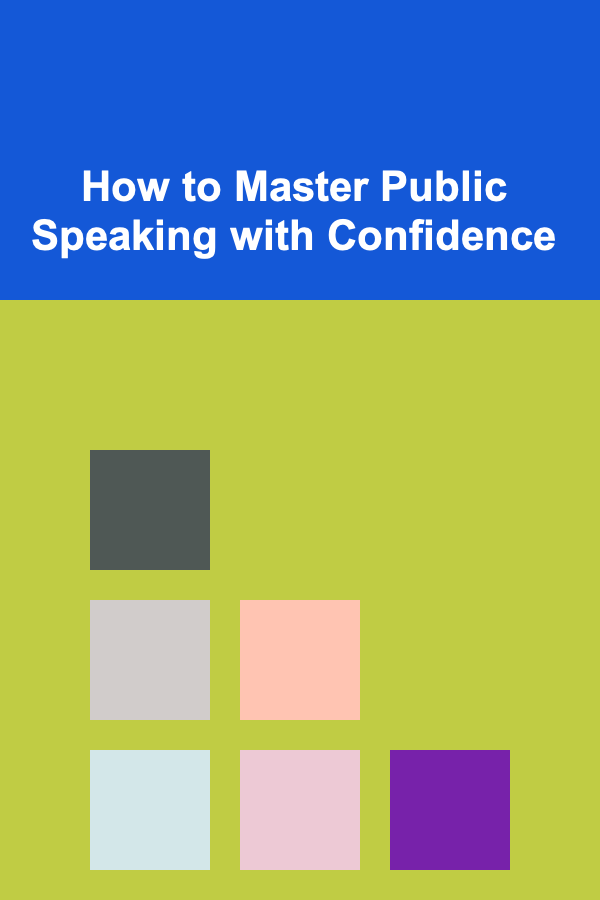
How to Shoot Cinematic Wedding Highlights
ebook include PDF & Audio bundle (Micro Guide)
$12.99$9.99
Limited Time Offer! Order within the next:

Weddings are one of the most significant events in a person's life. As a wedding videographer, it is your job to capture these moments in a way that tells a compelling story, evokes emotion, and preserves the memories for the couple and their loved ones. One of the most popular forms of wedding videography is the cinematic wedding highlight --- a short, visually stunning, and emotionally captivating video that showcases the essence of the wedding day. In this article, we will explore how to shoot cinematic wedding highlights, focusing on everything from pre-production planning and camera techniques to editing and post-production.
1. Understanding Cinematic Wedding Highlights
Before diving into the technical aspects of shooting cinematic wedding highlights, it is essential to understand what sets these videos apart from standard wedding videography.
A cinematic wedding highlight is a short, usually 4-6 minute, video that captures the most significant moments of a wedding day in a way that mimics the storytelling approach used in movies. It often includes a combination of slow-motion shots, breathtaking compositions, dramatic lighting, and a carefully chosen soundtrack. The goal is to evoke a sense of emotion and awe while highlighting the most important parts of the day, such as the ceremony, the vows, the first kiss, the first dance, and the reception.
What makes cinematic wedding highlights stand out is the creative storytelling. Rather than simply documenting the event chronologically, cinematic wedding highlights focus on mood, emotion, and artistic expression. These videos often feel more like a short film, complete with beautifully composed shots, dynamic camera movements, and seamless transitions.
2. Pre-Production Planning
Like any cinematic project, shooting wedding highlights requires careful planning. Preparation is key to achieving a high-quality result. A well-planned shoot allows you to capture the essential moments while also providing room for creative expression.
2.1 Meeting the Couple
Before the wedding day, it's important to meet with the couple and discuss their vision for the wedding highlight. This meeting helps you understand their preferences, style, and any special moments they want to be captured. It also gives you a sense of the tone and vibe they want to convey in the final video.
During this meeting, make sure to ask the following questions:
- What style of video do you envision for your wedding? (Romantic, dramatic, fun, etc.)
- Are there any specific moments or people you want to make sure are featured?
- What kind of music do you prefer for the highlight? Do you have a particular song in mind?
- Are there any cultural or religious customs you want to make sure are captured?
- Do you have a preferred pacing or length for the final video?
Understanding the couple's preferences will allow you to tailor your shoot to meet their expectations.
2.2 Creating a Shot List
A shot list is a crucial tool in wedding videography, especially for cinematic highlights. While you don't want to be too rigid in sticking to a set list of shots, having a guideline ensures that you don't miss any critical moments.
Here are some common shots for cinematic wedding highlights:
- Bride and Groom Prep: Capturing the emotional and intimate moments as the bride and groom get ready.
- First Look: The moment when the couple sees each other for the first time on the wedding day.
- Ceremony Shots: Wide shots, close-ups, and reactions to vows, rings, and the first kiss.
- Details: Beautiful shots of the wedding dress, rings, floral arrangements, and decor.
- Reception Highlights: The couple's first dance, speeches, and candid moments with guests.
- The Send-Off: The final shot as the couple exits the venue, often with sparklers or confetti.
In addition to the shot list, it's also important to have a timeline. Knowing when certain events will take place allows you to plan your shots accordingly.
2.3 Equipment Checklist
To capture cinematic wedding highlights, you'll need the right equipment. The equipment you use will significantly impact the final video's look and feel. Here's a checklist of essential equipment for cinematic wedding videography:
- Cameras: A high-quality mirrorless or DSLR camera, such as the Sony A7S III, Canon EOS R5, or Panasonic GH5, is a must. These cameras offer excellent image quality, low-light performance, and versatile frame rate options.
- Lenses: A variety of lenses will help you achieve different looks. A fast prime lens (e.g., 50mm f/1.4 or 85mm f/1.4) is perfect for shallow depth of field shots. A wide-angle lens (e.g., 16-35mm f/2.8) is great for capturing wide shots, while a telephoto lens (e.g., 70-200mm) is ideal for candid, long-range shots.
- Gimbal or Steadicam: To create smooth, cinematic movement in your shots, use a gimbal or Steadicam. This allows for fluid, stable footage, even when moving around.
- Tripod: A sturdy tripod is essential for static shots, especially during the ceremony or speeches.
- Drone: A drone can be used for aerial shots of the venue, providing a stunning perspective of the wedding location.
- Audio Equipment: High-quality audio is crucial for weddings. Wireless lapel microphones for the couple during the vows, as well as a shotgun mic for capturing ambient sounds, will ensure the audio is clear and professional.
- Lighting: Soft, diffused lighting is essential for capturing intimate moments. Consider bringing along a portable LED light for interviews or low-light scenarios.
Having the right equipment in place allows you to work quickly and creatively, without the need to worry about technical limitations.
3. Shooting Cinematic Wedding Highlights
Now that you've planned and gathered your equipment, it's time to head to the wedding. Shooting cinematic wedding highlights requires both technical skill and artistic vision. Below are several techniques and tips for capturing stunning footage.
3.1 Framing and Composition
Cinematic shots are all about composition. Pay attention to the framing of each shot, ensuring that the subject is well-positioned within the frame. Use the rule of thirds to create balanced and aesthetically pleasing compositions. This means dividing the frame into nine equal parts using two horizontal and two vertical lines, and positioning key elements along these lines or at their intersections.
In addition to the rule of thirds, consider leading lines , symmetry , and depth when framing your shots. For example, use a pathway or archway as a leading line that directs the viewer's gaze toward the couple.
3.2 Camera Movements
Cinematic wedding highlights often feature smooth, flowing camera movements. There are several techniques you can use to add a dynamic feel to your footage:
- Tracking Shots: Use a gimbal or Steadicam to follow the couple as they walk, dance, or interact with guests. This adds a sense of intimacy and movement.
- Push-Ins: Slowly push the camera in toward the subject, either using a slider or manually. This creates a sense of closeness and emotion.
- Dolly Shots: Use a dolly or slider to create smooth, linear movements. These are great for capturing moments like the bride walking down the aisle or the couple's first kiss.
- Over-the-Shoulder Shots: Capture the bride or groom from behind to give the viewer a sense of perspective and engagement.
- Slow Motion: Slow-motion shots are a hallmark of cinematic wedding videography. Use slow-motion to emphasize significant moments, such as the first kiss or the couple's first dance.
Make sure to use these techniques subtly and sparingly to maintain the video's cinematic feel without overloading it with too much motion.
3.3 Lighting
Lighting is one of the most important elements in cinematography. In wedding videography, natural light is often the best option, especially for moments like the bride's preparations or outdoor portraits. However, you may need to supplement with artificial lighting in certain situations, such as indoor receptions or low-light ceremonies.
- Backlighting: Position the light source behind the subject to create a beautiful rim light around them. This adds a sense of depth and highlights the contours of the subject's face and clothing.
- Soft Light: Use soft, diffused light sources to avoid harsh shadows and create a flattering effect, especially for close-up shots.
- Golden Hour: The period just before sunset or after sunrise offers warm, soft light that is perfect for romantic, cinematic shots.
Make sure to control the light in your shots to match the mood and tone you want to convey.
3.4 Capturing Emotional Moments
At its core, wedding videography is about capturing the emotions of the day. To achieve this, focus on the subtle moments that make the wedding special. Candid shots of guests laughing, the bride's nervous excitement before walking down the aisle, or the groom's reaction as he sees his bride for the first time are the moments that will resonate with the couple and their families.
- Facial Expressions: Close-up shots of facial expressions can reveal a lot of emotion. Focus on the subtle details like tears, smiles, or hand gestures to tell a deeper story.
- Interaction Between the Couple: Capture intimate moments between the couple, such as hand-holding, whispered words, or quiet gazes. These moments convey the deep connection between the two.
- Guest Reactions: Guests' reactions to key moments, like the vows or the first dance, can add a layer of emotion to your wedding highlight.
By focusing on these emotional moments, you can create a cinematic wedding highlight that feels personal and meaningful.
4. Post-Production and Editing
After the wedding, the magic truly happens in the editing room. Editing is where you can transform raw footage into a cinematic masterpiece. Here are some tips for editing wedding highlights:
4.1 Storytelling
Even though wedding highlights are short, they should still tell a story. Consider the pacing of the video and how you want to guide the viewer through the day. A strong story arc --- starting with the preparations, building through the ceremony and reception, and concluding with the send-off --- helps the video feel cohesive and emotionally impactful.
4.2 Color Grading
Color grading is essential to achieving the cinematic look. Use software like DaVinci Resolve or Adobe Premiere Pro to apply a cinematic color grade to your footage. Aim for warm, rich tones, and be mindful of skin tones. Many videographers use cinematic LUTs (Look-Up Tables) to speed up the color grading process and achieve a professional look.
4.3 Music Selection
The music you choose plays a crucial role in setting the tone for the wedding highlight. Work closely with the couple to select a song that reflects their style and the mood of the day. Music with emotional depth, such as instrumental tracks or romantic ballads, works well for wedding videos. Make sure to sync the music to the footage to enhance emotional moments and transitions.
4.4 Transitions
Smooth transitions between shots are essential for maintaining the cinematic flow of the video. Use techniques like cross-dissolves , whip pans , and fade-ins/outs to seamlessly move from one moment to the next.
4.5 Final Touches
Once the rough cut is complete, refine the details. Adjust audio levels, balance lighting, and remove any distracting elements from the footage. Make sure the final video is polished and professional.
5. Conclusion
Shooting cinematic wedding highlights requires a blend of technical expertise, creative vision, and emotional storytelling. By focusing on pre-production planning, mastering camera techniques, capturing emotional moments, and refining your editing skills, you can create wedding highlights that truly capture the magic of the day. Remember that the ultimate goal is to tell a story --- a story that celebrates love, emotion, and the unforgettable moments that make a wedding day so special.

How to Make Laundry Day More Efficient
Read More
Why You Should Keep a List of Important Contacts Organized
Read More
How to Master Public Speaking with Confidence
Read More
How To Brew Coffee on a Camping Trip
Read More
How to Plan for the Impact of Automation on Your Workforce
Read More
10 Tips for Using AI Tools to Enhance SEO Strategies
Read MoreOther Products

How to Make Laundry Day More Efficient
Read More
Why You Should Keep a List of Important Contacts Organized
Read More
How to Master Public Speaking with Confidence
Read More
How To Brew Coffee on a Camping Trip
Read More
How to Plan for the Impact of Automation on Your Workforce
Read More